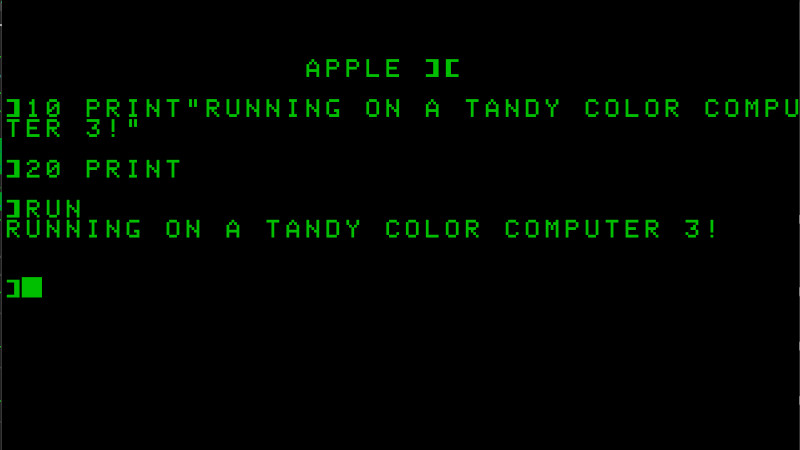This is the day! Grab some nata de coco to elevate your holiday desserts! Mango bango anyone? A little chewy, mildly sweet, and refreshing, nata de coco is the jelly that is better than boba, and if you haven't...
Nata de coco is one of those natural gems that can transform a recipe into the next levels of texture and taste. They’re a little chewy, mildly sweet, and refreshing, nata de coco, sometimes called coconut gel, is the jelly that is better than boba, and if you haven’t tried it, now is the time.
 Coconut gel cubes are ready to be added to a big bowl of mango bango, just in time for the party to start!
Coconut gel cubes are ready to be added to a big bowl of mango bango, just in time for the party to start!
Table of contents
What is Nata de Coco?What is Nata de Coco texture?What is Nata de Coco taste?How do you use Nata de Coco?Ingredients in Nata de CocoIs Coconut gel healthy?How is Nata de Coco made?What is Nata de Coco?
Nata de coco is a chewy, translucent jelly-like food product produced by the fermentation of coconut water.
It is commonly used in desserts, beverages, and salads, adding a unique texture and sweetness to the dish.
Due to its unique texture and flavor, this type of coconut gel is popular in Filipino cuisine and is also used in various recipes around the world.
Where is Nata de Coco From?
The rich history dates back to the Philippines, where it is believed to have originated. The name “nata de coco” is derived from Spanish and Filipino words, with “nata” meaning cream and “coco” referring to coconut.
Another amazing thing that has come from the Philippines. Yay!
The process of making nata de coco involves the fermentation of coconut water using a bacterial culture, resulting in the formation of a chewy, translucent jelly-like substance.
Originally, this fermentation process was likely a method of preserving the coconut water, making it suitable for consumption over an extended period.
As the popularity of nata de coco has grown, it has found its way into various culinary traditions around the world, further cementing its status as a versatile and beloved component in both sweet and savory dishes.
What is Nata de Coco texture?
Slippery, chewy, gelatinous, and refreshing! The chewy part means that it has some fibrousness, but it’s not chewy like boba or tapioca pearls. It’s more jelly like, hence why it’s also called coconut gel, in that the bite goes all the way through and it’s a bit firm.
What is Nata de Coco taste?
The flavor is very mild. You can hardly taste any coconut. It’s really a very light coconut water and flavor of sweetened sugar water. Cooling on a hot day, coconut gel is a very pleasing taste.
Since this should be served chilled, the flavor is even more subtle because of the coldness in the cubes.
It’s the combo of the subtle taste and the chewy texture that make this a very enjoyable ingredient in so many recipes.
How do you use Nata de Coco?
You can incorporate it into various dishes such as the following:
drink desserts like adding it to mango sago to make mango bango desserts like whipped cream ambrosia, in puddings, and even in cakes bubble tea, beverages, and cocktails such as iced cantaloupe juice, iced jasmine tea, coffee drinks, and even soda drinks salads like fruit cocktail salad Put in ice cream or used as a topping like on halo-halo. Enjoy by itself!The chewy, translucent jelly-like texture of nata de coco makes it an appealing, addicting, and versatile ingredient in both sweet and savory recipes.
Ingredients in Nata de Coco
Nata de coco is primarily made up of coconut water and a bacterial culture used in the fermentation process.
Additional ingredients may include sweeteners and flavorings, although these can vary depending on the specific production methods and recipes.
The translucent, jelly-like texture of nata de coco is a result of the fermentation process, which transforms the coconut water into the chewy substance with a hint of natural sweetness.
Is Coconut gel healthy?
There are some health benefits of this kind of coconut gel.
low calorie low fat high fiber no cholesterolConsume this food in moderation, as it is typically sweetened, mixed with high fat and high sugar milks, and may contain added sugars.
What are the calories in nata de coco?
Coconut gel is relatively low in calories. A 100-gram serving typically contains around 60 calories, making it a light and refreshing addition to various dishes and beverages. This is just an estimate. Please check the packaging for the calories in your serving.
Is it natural?
As with any food product, it is advisable to check the ingredient list for any additives or preservatives that may affect its nutritional value.
There are a lot of brands that are not natural at all.
I read package ingredients to find brands with just coconut water and sugar (all natural) that is made locally in my city. For that reason, I will suggest checking out the selection throughly and then choosing the best option.
Is it a probiotic?
As for its probiotic properties, while this is a fermented product, it may not necessarily contain active live cultures like traditional probiotic foods such as yogurt or kefir. Therefore, its probiotic benefits can vary depending on the specific production methods and ingredients used.
How is Nata de Coco made?
Through a fermentation process using coconut water, it makes this special ingredient.
The steps typically involve adding a bacterial culture to the coconut water, allowing it to ferment, forming a jelly-like substance.
Lastly, the formed jelly is then cut into cubes or other shapes before being packaged and sold. This process gives nata de coco its signature chewy and translucent texture.

Filipino Recipes with Nata de Coco
Some popular Filipino dishes featuring nata de coco include:
Halo-Halo: I am always digging for it when I eat halo halo! This very famous Filipino shaved ice dessert often includes nata de coco among its many colorful and flavorful toppings. Halo-halo is a delightful mix of sweet beans, jellies, fruits, and shaved ice, topped with ice cream. Mango Bango: I mix it with fresh mango, tapioca, and a combo of three kinds of milk. Buko Pandan Salad: This refreshing Filipino dessert salad adds in young coconut (buko), pandan jelly, and sweetened cream. Buko Salad: Nata de coco is a key ingredient in buko salad, a creamy and fruity dessert made with young coconut, condensed milk, and various fruits.These are just a few examples of how I use this food item in Filipino recipes.
Jackie’s Nata de Coco Picks
I love COCON’s nata de coco which only has coconut water and sugar in it for a more pure coconut gel. I found it at 99 Ranch in Los Angeles. This is best for mango bango and halo halo.
Gold Medal is a Filipino brand and I love the pandan flavor they offer. It’s a special occasion ingredient and delicious in buko pandan dessert drink.
Lastly, Jubes nata de coco is one of the best out there when it comes to flavored assortment (lychee, mango, grape…). While there is artificial flavor in the flavors, the selection is quality and I prefer Jubes over some others that are heavy on red dye and a lot more additives and coloring.
Questions
Can I freeze this?
No. The texture will change. I do not recommend.
Can I store leftovers?
Yes. Store leftovers in sugar syrup to retain the quality and freshness.
Is coconut gel gluten free?
Yes. This is a gluten free food.
Why does my coconut gel taste like perfume?
Try to find the more natural brand selections and also, the coconut water taste is very mild, almost more of a fragrance. It is light and aromatic of coconut floral notes.
The post What is NATA de COCO? appeared first on ASIAN and FILIPINO Recipes for All.
















